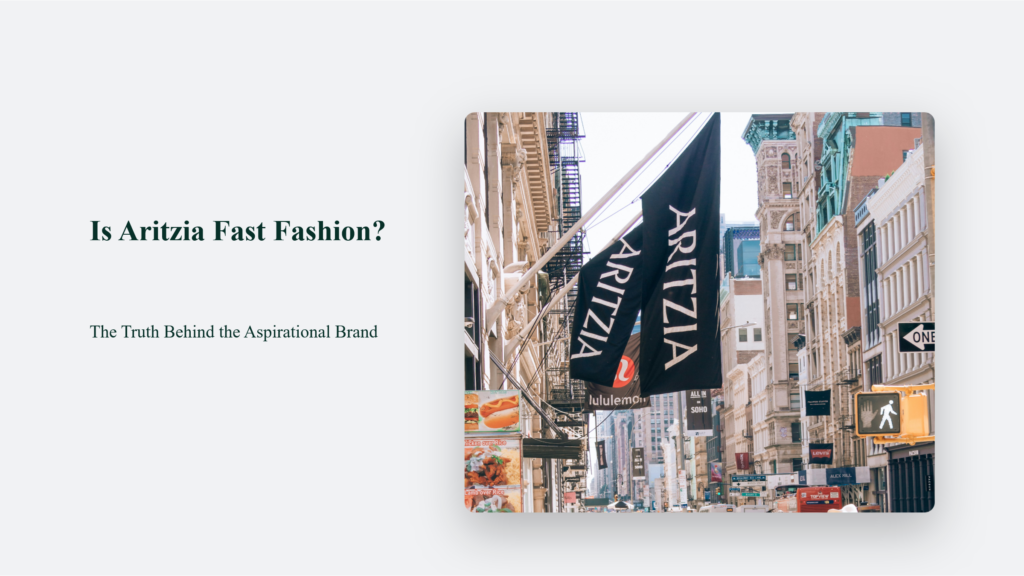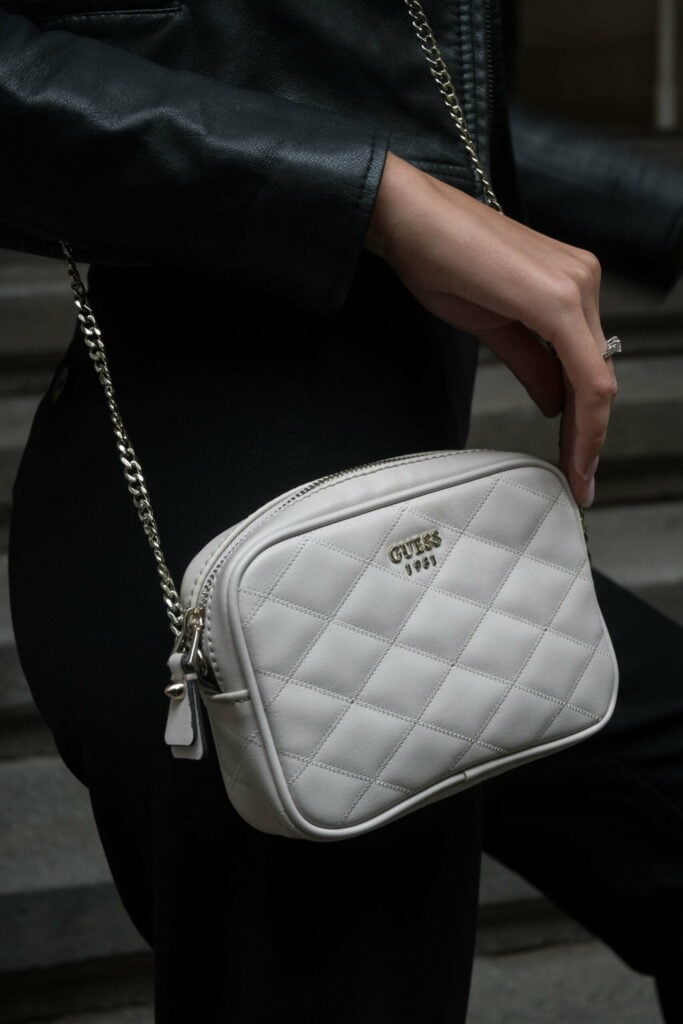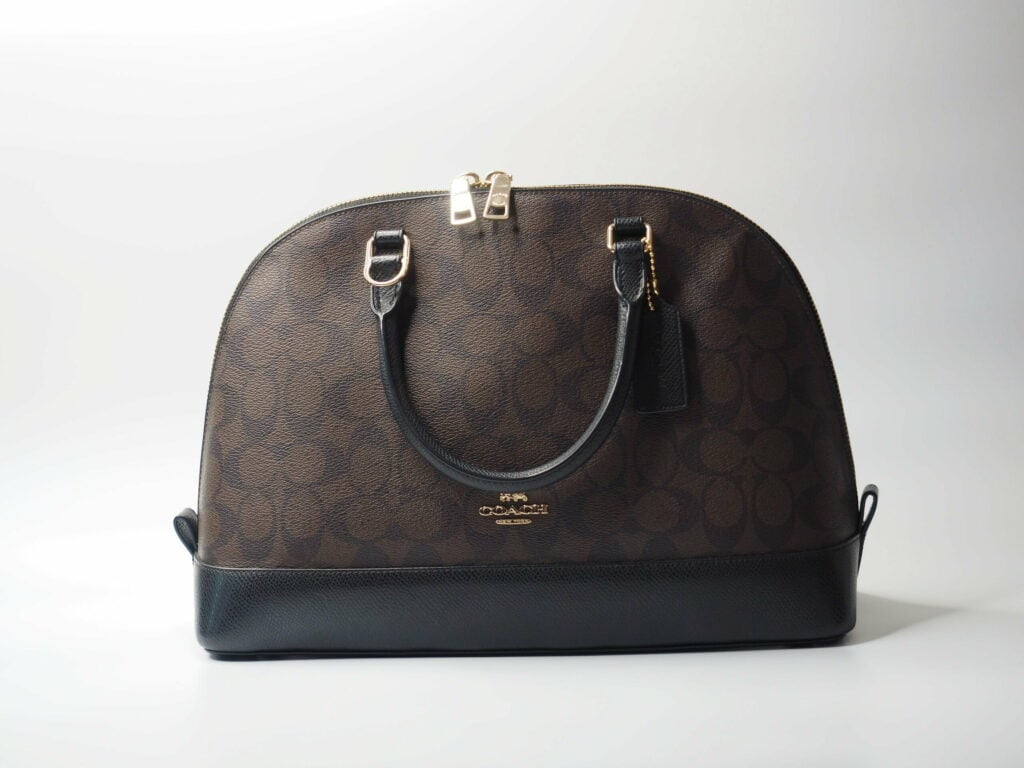In the ever-evolving fashion landscape, one brand that has captured the hearts and wallets of countless consumers is Aritzia. With its sleek and minimalist aesthetic, Aritzia has positioned itself as an “everyday luxury” brand, offering a curated selection of apparel and accessories that balance style and affordability. However, as the conversation around sustainability and ethical practices in the fashion industry intensifies, a burning question arises: Is Aritzia fast fashion?

The Rise of Aritzia: From Humble Beginnings to Global Phenomenon
Aritzia’s journey from a humble boutique in Vancouver to a global phenomenon is a remarkable story of entrepreneurial vision and strategic execution. Here’s an in-depth look at the brand’s meteoric rise:
In 1984, Brian Hill opened the first Aritzia boutique in Vancouver with a simple yet profound idea – to offer beautiful clothes in an aspirational space with exceptional service. Little did he know that this modest concept would blossom into a global phenomenon, with Aritzia now boasting over 100 stores across North America and a thriving e-commerce platform.
The brand’s meteoric rise can be attributed to its ability to tap into the desires of modern consumers, particularly millennials and Gen Z, who crave fashion-forward pieces without the exorbitant price tags of luxury labels. Aritzia’s unique positioning, nestled between fast fashion and high-end luxury, has allowed it to captivate a diverse audience seeking quality, style, and affordability.
Tapping into the Desires of Modern Consumers
One of the key factors behind Aritzia’s success has been its ability to understand and cater to modern consumers’ evolving tastes and preferences. The brand has struck a chord with millennials and Gen Z, who are drawn to its fashion-forward yet accessible aesthetic.
“Aritzia has managed to create a brand that resonates with younger generations,” says fashion analyst Sarah Jones. “They offer trendy pieces that are still wearable and versatile, which appeals to consumers who want to stay on-trend without breaking the bank.”
The Power of Aspirational Retail Spaces
Another aspect contributing to Aritzia’s rise is its focus on creating aspirational retail spaces. From the beginning, Hill recognised the importance of providing an exceptional in-store experience with boutiques designed to make customers feel special and valued.
“Aritzia’s stores are more than just shopping places,” explains retail expert Mark Thompson. “They’re carefully curated environments that create a sense of aspiration and exclusivity, which is a powerful draw for consumers seeking a luxurious shopping experience.”
Embracing E-Commerce and Social Media
While Aritzia’s brick-and-mortar stores have played a crucial role in its success, the brand has also embraced the digital age with a robust e-commerce platform and a strong social media presence.
Aritzia has done an excellent job of leveraging social media platforms like TikTok and Instagram to connect with its target audience,” notes marketing strategist Emily Davis. “Their social media campaigns have been instrumental in driving brand awareness and cultivating a loyal following among younger consumers.”
Striking a Balance Between Quality and Affordability
Perhaps one of the most significant factors behind Aritzia’s success has been its ability to balance quality and affordability. The brand’s products are designed to be fashion-forward and well-made, yet still accessible to many consumers.”Aritzia has managed to position itself as an ‘affordable luxury’ brand,” says fashion writer Jessica Lee.
As Aritzia continues to expand its global footprint, it’s clear that the brand’s unique positioning, aspirational retail experience, and ability to connect with modern consumers have been instrumental in its meteoric rise. With a loyal following and a strong brand identity, Aritzia is poised to continue its journey as a global fashion phenomenon.
Aritzia’s Brand Ethos: Balancing Aspiration and Sustainability
At the core of Aritzia’s brand ethos lies a commitment to “everyday luxury.” This philosophy revolves around offering high-quality products at an attainable price point and an aspirational boutique and online shopping experience. The brand’s exclusive in-house labels, such as Wilfred, Babaton, and TNA, cater to various aesthetics and lifestyles, ensuring something for everyone.
However, as consumers become increasingly conscious of the environmental and social impacts of the fashion industry, Aritzia has faced scrutiny regarding its sustainability practices. The brand has taken steps to address these concerns, incorporating sustainable fabrics like organic cotton and recycled materials into its collections.
Additionally, Aritzia has partnered with organisations like the Sustainable Apparel Coalition and the ILO Better Work Programme to promote ethical labour practices and environmental stewardship throughout its supply chain.
Furthermore, Aritzia has developed a set of product sustainability targets to achieve by FY27, demonstrating a commitment to continuous improvement.
The brand’s Denim Forum line exemplifies its efforts to reduce water usage. Employing laser, nanobubble technology, and GreenScreen Certified™ softeners, it has significantly reduced water consumption compared to industry averages.
While Aritzia has made strides in addressing sustainability concerns, it acknowledges the need for ongoing progress. The brand’s transparency in sharing its practices and partnerships with organisations like Textile Exchange and the ILO Better Work Programme reflects a commitment to accountability and continuous improvement.

Statistics and Data: Unpacking the Fast Fashion Dilemma
To better understand the complexities of the fast fashion debate, let’s delve into some eye-opening statistics and data:
- According to the World Resources Institute, the fashion industry is responsible for 10% of global carbon emissions, nearly as much as the entire European Union.
- The average consumer now buys 60% more clothing per year compared to 15 years ago, but each garment is kept for only half as long.
- It is estimated that the fashion industry produces 92 million tons of textile waste each year, with the equivalent of a garbage truck full of clothes being burned or landfilled every second.
- Fast fashion brands like Fashion Nova, SHEIN, and Revolve all score less than 10% on the Fashion Transparency Index, indicating a need for more transparency regarding their environmental and social impacts.
These sobering statistics highlight the urgent need for the fashion industry to reevaluate its practices and embrace a more sustainable and ethical approach.
Is Aritzia Fast Fashion? Examining Debate
The term “fast fashion” has become a contentious topic in the industry. It is often associated with brands prioritising rapid production cycles, low-cost materials, and disposable trends. While Aritzia’s pricing and product turnover may seem aligned with fast fashion practices, its commitment to quality and longevity sets it apart from the traditional fast fashion model.
Unlike fast-fashion giants that churn out new collections every few weeks, Aritzia’s approach is more measured, Focusing on timeless pieces that can be worn season after season. The brand’s design teams meticulously craft each collection, ensuring that the garments embody the latest trends and possess a level of craftsmanship and attention to detail that extends their lifespan.
Aritzia positions itself as a purveyor of “everyday luxury,” offering high-quality products at an attainable price point and an aspirational boutique and online shopping experience.
This philosophy contrasts sharply with the fast fashion model, prioritising low costs and rapid trend replication over quality and longevity. While Aritzia’s pricing may be higher than that of some fast fashion brands, its focus on quality materials and construction justifies the premium.
The brand aims to balance affordability and longevity, encouraging consumers to build a capsule wardrobe of versatile and timeless pieces. Moreover, Aritzia has taken steps to address sustainability concerns, incorporating sustainable fabrics like organic cotton and recycled materials into its collections.
The brand has also partnered with organisations like the Sustainable Apparel Coalition and the ILO Better Work Programme to promote ethical labour practices and environmental stewardship throughout its supply chain.
In contrast, fast fashion brands are often criticised for lacking transparency and accountability regarding their environmental and social impacts.
Many fast-fashion companies have been accused of unethical labour practices, excessive waste, and a disregard for sustainability. While Aritzia may not be the epitome of sustainability, its commitment to quality, timeless designs, and ethical practices sets it apart from the traditional fast-fashion model. The brand encourages mindful consumption and a deeper appreciation for well-crafted garments that transcend fleeting trends.
The Bottom Line:
In conclusion, the debate surrounding Aritzia’s classification as a fast-fashion or sustainable brand is complex and multifaceted. While the brand has taken commendable steps towards sustainability and ethical practices, there is always room for improvement. Ultimately, it is up to conscious consumers to make informed choices and support brands that align with their values, driving positive change within the fashion industry.
Frequently Asked Questions:
Is Aritzia considered fast fashion?
While Aritzia may share some similarities with fast-fashion brands in terms of pricing and product turnover, its commitment to quality, timeless designs, and sustainability efforts sets it apart from the traditional fast-fashion model.
What sustainable practices does Aritzia employ?
Aritzia incorporates sustainable fabrics like organic cotton and recycled materials into its collections. The brand also partners with organizations like the Sustainable Apparel Coalition and the ILO Better Work Programme to promote ethical labour practices and environmental stewardship throughout its supply chain.
How can consumers make more sustainable fashion choices?
Consumers can embrace the concept of a capsule wardrobe, seek out brands that prioritize transparency and ethical practices, and support initiatives that promote sustainable fashion. Additionally, they can extend the lifespan of their garments through proper care and repair.




